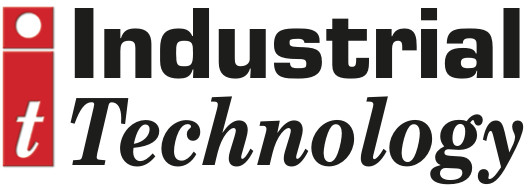
Posted to News on 13th Jun 2025, 13:00
Stable drone with robot arm to increase workplace safety
A new design of drone equipped with a six-axis robotic arm can maintain stability for precision tasks, such as maintenance and contact-based inspection. Launching this summer, the AERAS drone is set to reduce work at height accidents and speed up manual tasks. To maintain position even in wind and turbulence, the new drone relies on precision drives from maxon and control algorithms to achieve a dynamic motion response.

(See maxon at MachineBuilding.Live, 15 October 2025, on stand 103)
A fall from height is by far the most common cause of fatality in the workplace, and it is also the most frequent cause of serious injury while at work. Working at height on tasks such as maintenance and inspection is also extremely slow, mainly because of the time it takes to gain access with scaffolding, lifts, or even ropes. These factors also make working at height expensive.
A new start-up company is aiming to reduce those concerns with the world's first drone with a six-axis robotic arm that can achieve stable hover and flight. Invictus Robotics is shortly set to launch AERAS, which stands for Aerial Effector Robot with Adaptive Stabilisation. The genius of the new quadcopter is that unlike a normal drone, AERAS remains sufficiently stable to operate its dexterous robotic arm to perform non-destructive inspections while in the air.
This level of precision is achieved through dynamic control of AERAS' robotic arm, which remains stable by counteracting any movement of the drone. As a result, the arm's end effector can remain within the typical margin of error required for manual inspection tasks.
Aerial maintenance and inspection
"We're automating physical work in the air," says Osman Zuhayr, CEO of Invictus Robotics. "The use of drones for video capture is well documented but there's a billion-dollar market for wider applications that depend on the drone being able to make physical contact with stable control. With AERAS, you can fly up and get the job done quickly and safely in a matter of minutes."
The new drone is mainly intended for the construction sector and energy utilities industry but with flexible use, the end effector of its robotic arm is modular and able to integrate a variety tools and sensors.
"To inspect a bridge, a civil engineering company usually has to close access for an extended period, which could include the road below, and erect scaffolding or call on a rope team," says Osman. "Various robotics companies are developing crawler robots, but they're limited in agility and reach. AERAS can fly to, and along, the intended location to take the scans you need within minutes to assess corrosion, leaks, or damage."
The drone can also speed up manual work by carrying tools to where they're required, quickly raise cables or ropes, as well as spraying and painting, or even cleaning surfaces by applying the same sensitivity as a human hand.
Adaptive stabilisation
AERAS can be operated by any drone pilot. Using a joystick to fly the drone into position, with the flick of a switch, automatic flight mode takes over, and the joystick then controls the movement of the robotic arm. There is also a HD stereo vision system, providing both visual feedback to the pilot along with object detection, and depth perception information about its environment and performance.
Crucial to the drone's adaptive stabilisation capability is the control and drive system behind its robotic arm. The Invictus Robotics team has developed a motherboard controller that runs algorithms created to enable static position stabilisation of the arm, which dynamically counteracts any movement from the drone in real-time.
Each joint in the six-axis robotic arm is powered by a maxon flat EC brushless DC motor, each with a corresponding maxon EPOS4 controller that regulates position and current.
To actuate the AERAS controllers' motion commands, each axis uses a smart motion profile that ensures smooth movements of the robot arm and provides precision with a stop at the end of each move, enabling repeatable and accurate positioning.
Optimising torque density
As well as motion precision, high torque density was also essential. AERAS needs to be able to carry a payload of up to a maximum of three kilos, sufficient to cover the weight of tools or materials. While the robot arm is loaded with six motors and controllers, the drone itself needs to come in at less than six kilos to maintain flight stability, but low weight is also crucial to minimise energy and battery requirements.
"The arm had to be extremely precise in its control but it also had to be as light and as torque dense as possible too," says Osman. "The maxon drive systems are a perfect fit, and no other combination we looked at could meet what AERAS needed to achieve."
As a start-up business, maxon supported Invictus Robotics through its Young Engineers Program. maxon UK and Ireland engineer, Ronak Samani, specified the drive system and provided advice on engineering integration and set up.
"Every time I need to contact maxon for a query or for advice, the response is always quick with a quality answer. We couldn't be happier with the support we've received, and Ronak has provided really helpful guidance," says Osman.
Invictus Robotics is currently finalising its second prototype of AERAS, which is set to be deployed on a live project in the Summer.
"The regulations for using AERAS are the same for using any drone, so while public areas have a higher level of control and permissions, for most industrial applications and indoor environments, AERAS could normally be deployed right away," says Osman. "Generally in the UK, there's a labour shortage, which our drone can help to address, but I don't believe in automation replacing the worker but instead, it can make their job safer and more efficient."







